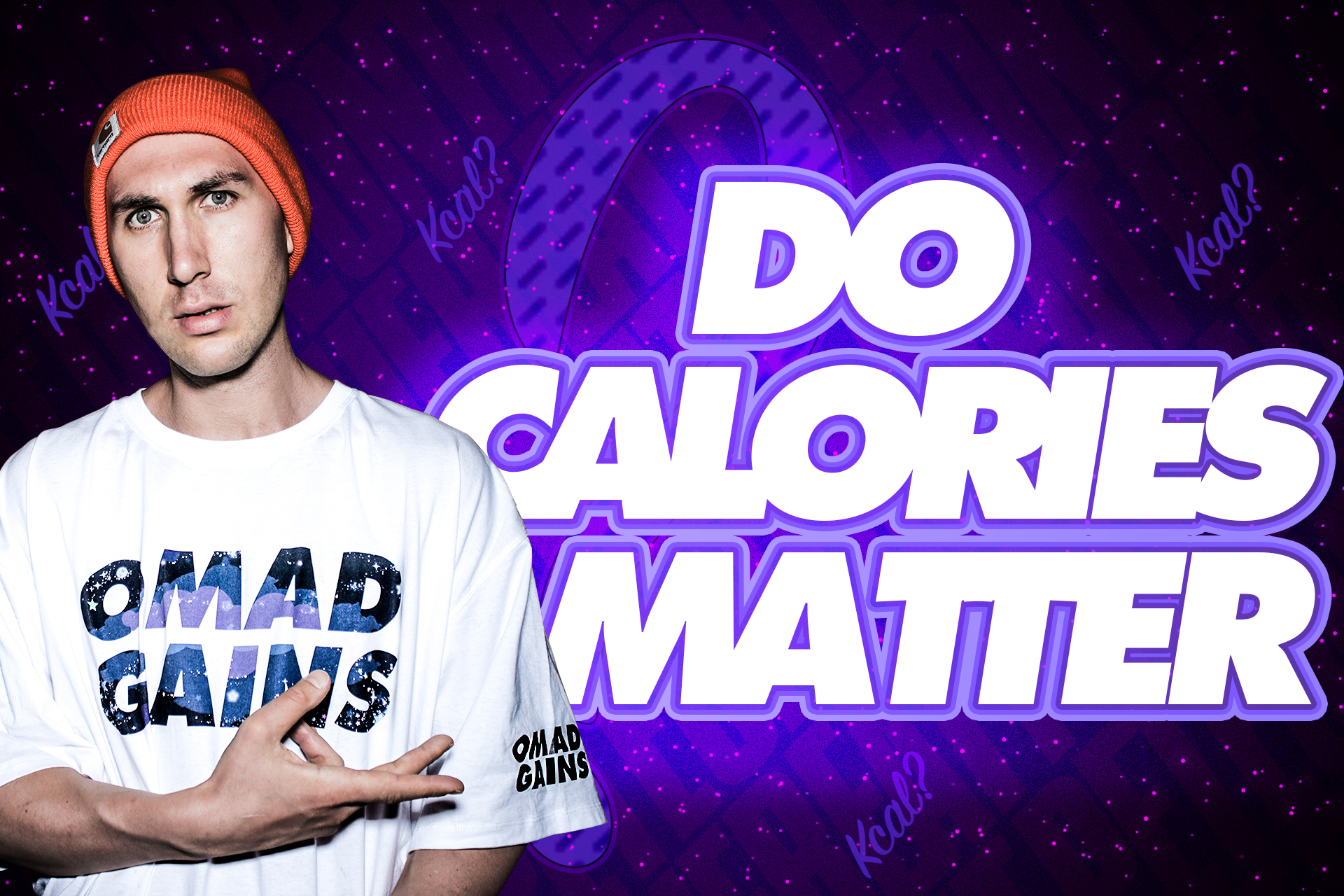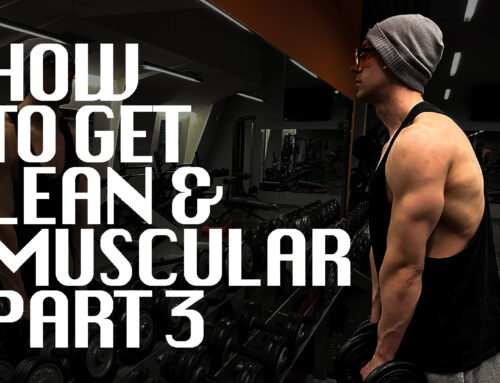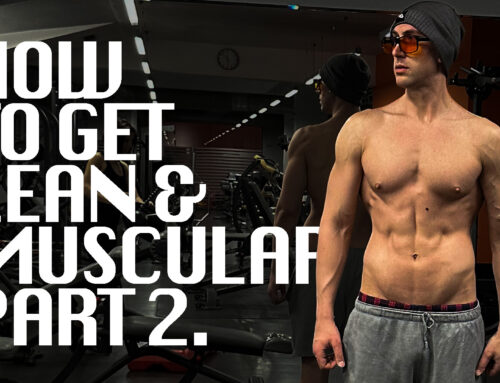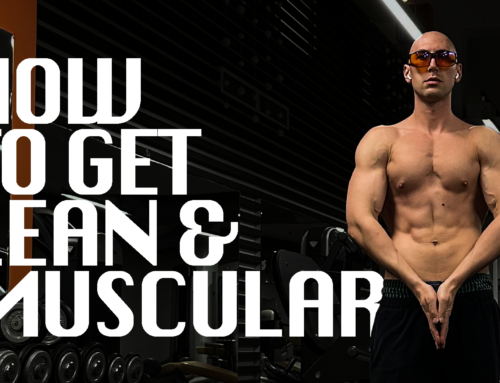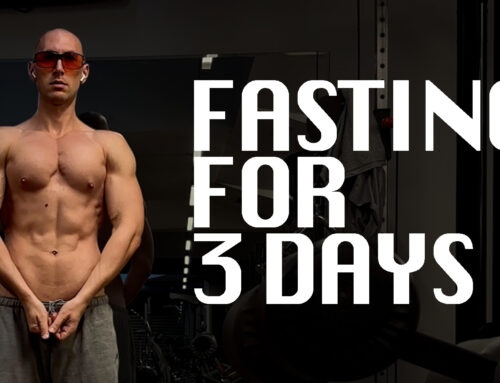Many diet trends changed since the past decade. To capitalize off of each, the mainstream also transformed its face. Hence adjusted to platforms like “YouTube” and “Social Media.” From “High-Carb” to “Caveman.” From “Paleo” to “Keto,” or “H.F.L.C.” And now reinventing the wheel by calling some long-existing ones “All Meat” or “Carnivore.”
While I’m sure there’s some solid “science” to “kill” and “back” each of them and that the (internet) “Diet War” is just as Serious as that of the L.A. gangs, it seems like one dilemma stays immortal. Namely, that of wheater or not, you should track your calories? Because of that, I decided to make a very particular video. One which rather than giving straight away answer, will hopefully provoke you to (once and for all) find the right оn your own.
How it’s going to do that is by keeping it plain and simple and under 2000 words while addressing the several following things. (1) What “calories in/calories out” model’s all about and how successfully it applies to our physiology. (2) A few suggestions on how to get extra lean or merely lose weight. (3) The results of my own empirical study using both approaches. Tracking and cutting calories and having absolutely no idea of the number I eat. That being said, let’s run some intro and dive deep into the first.
Calories In Calories Out
A calorie is a measurement of heat. Based on the borrowed from physics law of thermodynamics the calories in/calories out model states that weight and body fat percentage control entirely depend on one thing. — Energy balance. AKA caloric intake and expenditure. Therefore to lose weight, you have to expend more than you consume. Or in other words, to simply move or exercise more.
While that likely applies to all sorts of furnaces, ovens, and maybe even engines, it proves very wrong when it comes to humans. Why’s that is because of our bodies’ complexity. Rather than a calorie calculator or detector, they have a much more sophisticated system of hormones and receptors.
Responding to different signals, the same can’t really determine if one’s on a caloric deficit or surplus. The more, important, however, is that by suppressing or elevating various hormones, it causes the occurring inside your body, biochemical reactions. Thus the modes it either stays in or gets out of.
Although that encompasses a lot more, including stress levels, sleep quality, whether or not you exercise and etc. since that’s where the calories come from, we’ll focus on food. — Mainly on a few of the hormones, it alters.
Insulin
Playing the most important role regarding getting fat or lean, when elevated insulin’s keeps, the body in what we call storing/preserving mode. What raises insulin in general, is food (or if you prefer calories). Therefore having “just a little bit” or “just a few calories” of something is actually totally different than not having any. So you best believe from that standpoint, calories do create much of a difference. However, the truth to the matter is that different foods affect insulin differently.
Carbs spike it the most, fats the least, and protein falls somewhere in the middle. An example of that would be to compare 100 calories from butter with the same number in the form of Bread. Though having the butter isn’t like not having anything, it’s effects on insulin are not even close to those produced by the Bread.
Here I believe it’s critical to mention something very substantial. Namely, that besides insulin, those foods also trigger some other things. While the protein and fats stimulate the production of two satiety signals, P.Y.Y. and C.C.K., in most cases carbs elevate levels of Ghrelin.
What that tells us are two things. (1) Though they aren’t made equal many carbs, mainly processed sugars and fructose make you hungrier, than you were before eating. Aw B.T.W. also gives you non-alcoholic liver disease. (2) By making you full and satiated proteins and fats help you stay without food for longer. But why you want to do that?
Well, as someone who does it for five-plus years, I can ensure you that there are quite a few reasons. Apparently, however, two of them are most important in this context. (A) The drop in insulin. (B) The elevation of glucagon and growth hormone.
Before getting into them, however, I’ll do this side: Formerly mentioning being hungrier after eating reminds us of the more recently invented highly palatable foods. Made of hydrogenated oils and processed sugars, those are products specially engineered to make you hungry.
Glucagon and HGH
Just like ingesting different foods signals your body to do different things, nothing (or fasting) works as another signal on its own. What that is? Well to destroy, recycle and basically, burn the already stored for fuel. In a sense, that and not some number of calories is precisely what gets you lean. So let me explain.
Also known as the total opposite of insulin, the destroyer, in this case, is a hormone called glucagon. The most important about it is that the same can’t be present if the former’s elevated and vice versa. Meaning that to allow your body enter the quote-unquote get lean mode you want to keep insulin low. How to is by merely ingesting nothing or no calories for extended periods.
What will also happen during fasting is an increase in human growth hormone secretion. As you likely heard, not enough of it is associated with excess body fat, decreased bone density, and muscle loss. Yet, the more important here is that along with the other counter-regulatory hormones adrenalin and cortisol, HGH increases blood glucose.
How it does it is by breaking down, the already stored energy. — That if you ask me should be a goal of anyone who tries to get lean. While the same doesn’t give elevated blood glucose levels, it does provide a remarkable energy boost and anti-aging benefits for those wanting to crush their day and workouts and stay young, for longer.
No, in spite of what some people want you to believe, fasting doesn’t lead to muscle loss. Besides preserving your lean tissue way better than a calorie-restricted diet, Fasting and HGH actually tend to increase it while ensuring a faster and better recovery.
If you decide to eat frequent meals, on the other hand, then you’ll stimulate insulin permanently. Meaning you’ll stay in what’s known as a highly-insulinogenic state and eventually become insulin resistant.
While from that situation, the required insulin drop may take 2 to 3 days, there’s something I think is even more fascinating. The quote-unquote fat cells expansion and the activation of a hormone.
Leptin
Called leptin, the name of this comes from the Greek word leptos and means thin. While leptin’s function is to decrease appetite, it does that as a critical part of our bodies inherent mechanism to maintain a healthy weight and not get fat nor too thin. Yes, just in case you don’t know yours also has one.
When triggered continuously, however, (such as in the case of insulin resistance), leptin kinda gets broken. That isn’t because it no longer does its job. But because by resisting it, the receptors start preventing it from doing so. The term for that condition is leptin resistance.
Obviously, that makes you more hungry. Hence leads to more eating and sustains the higher insulinogenic state. The latter you should consider a way ticket to permanent fattening. In spite of the calories you eat.
So after all, do calories matter, and should you track them? Well, I’m sure you can answer that on your own. Especially when considering the body’s system of hormones and receptors, of which none is for calories. To further help you with that, however, I suggest taking what likely is the most biohacking approach. Namely becoming your own experiment/empirical study.
Experiment
Simple as it sounds the same would boil down to tracking and cutting your calories. See how that goes for a month or two. During the same, you can follow a traditional, grains-heavy, 6 or more meals per day fitness diet. Or maybe even step it up a notch and use an I.I.F.Y.M. approach and fit some of those highly palatable foods in your macros. Then see how that goes and how sustainable it is.
Now let’s imagine you calculate your daily caloric intake. Аs we’ve mentioned, the expenditure also plays a substantial part. Then you realize that just like all of us, sometimes you move more, sometimes less. Sometimes you train with free weights and bigger muscles, others primarily with machines or smaller body parts. Maybe on some days, you follow double split, while on others, you do not. You go for a walk, meet with a friend, do grocery shopping, or have sex. On others, you don’t.
Then you find that your N.E.A.T. AKA Non-exercise activity thermogenesis or the energy you burn without exercise never stays the same. My question is, do you think you can also calculate that? While I won’t argue whether or not you can, I’ll only say you definitely should if you’re to create a deficit.
After done with this, proceed to part two of the experiment. Becoming very mindful of the periods when your insulin is somehow elevated, because of food or calories. Then working towards making them happen less and less frequently. In other words, begin keeping insulin as low as possible for as long as possible.
The longer you sustain it low, the more your body will do all that we covered regarding HGH and Glucagon. Hence the longer, the better. How to do that isn’t by eating smaller number calories, but by having fewer and fewer meals. At first during the day, and then through the course of one week.
To accelerate it further, however, I hugely recommend hitting the weights fasted. The same not just helped me get lean but to also build quite a bit of muscle.
But hey wouldn’t you be hungry if not eating frequently?
Well, considering what you’ll eat for a month or two before that, I suppose you will. Quite a lot actually. Because of that, I also suggest using a diet that (A) Won’t be making you hungrier after eating. (B) Will stimulate the production of P.Y.Y. and C.C.K. Meaning one entirely made of fat and protein.
Besides killing your hunger and helping you start a new relationship with food, the same ensures a way smaller insulin spikes when you actually cause them.
The more you do that, the more your body will break down the stored energy for fuel. Hence the leaner you’ll get. Try all that for a month or two and then make your final conclusion.
The results of my own experiment
Close to three-year, lasting there was a period of my life when I used to track my calories. Who told me to do so?
All of the experts from fitness magazines and top bodybuilding websites.
Eating fat deficient, small frequent meals, I measured my food, tracked my calories while maintaining a deficit, and even dropping to 1500 a day. What happened, however, was that aside from not growing muscles, and basically starving myself to death, I actually had difficulties getting rid of my back then still existing teenage tits. No, I didn’t have abs. Nor veins. Nor any definition whatsoever. Instead, I was bloated smooth and had a muffin top.
Then, however, I stumbled upon some more recent science regarding how our bodies function and a few legendary bodybuilders from the 70s. Using the former to hack and customize their methods, lead to more progress in one year, than all that I got for the previous three. And while other things played a role as well, people begin asking of whether or not started juicing. Although ever since I didn’t track a single calorie, my experiment continues and what you see are the results of it.
Thank you for your time!
- The Middle Pillar Meditation - March 21, 2020
- Outwitting The Devil Book Review - February 20, 2020
- Do Calories Matter? - July 2, 2019


